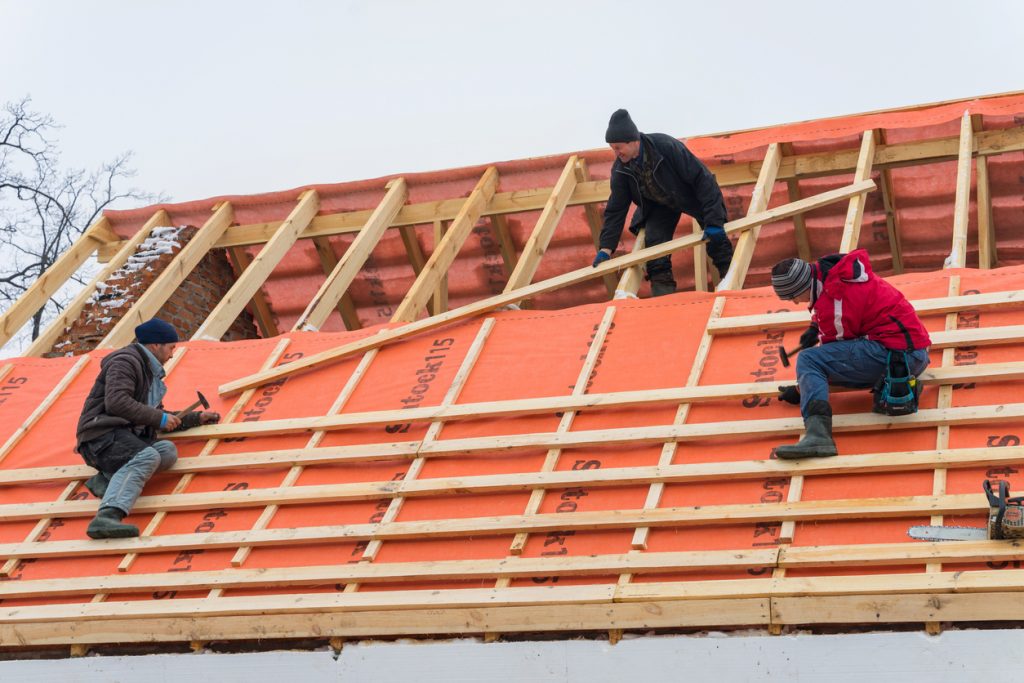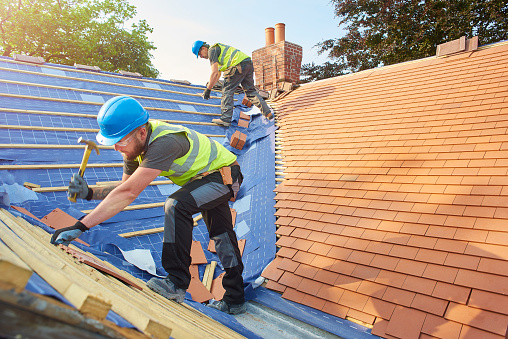Introduction
When it comes to energy efficiency in homes, most people think about windows, insulation, and HVAC systems. However, the roof over your head plays a crucial role in determining your home’s energy performance. This article from Newmarket roofing company, Ainger Roofing, explores the significant impact roofing has on home energy ratings and how different roofing materials and technologies can enhance energy efficiency.

Understanding Home Energy Ratings
What are Home Energy Ratings?
Home energy ratings provide a standardized assessment of a home’s energy efficiency. These ratings help homeowners understand their energy consumption and identify areas for improvement.
How Energy Ratings are Calculated
Energy ratings are calculated based on various factors, including insulation levels, window efficiency, HVAC system performance, and, importantly, the roofing materials and their properties.
Types of Roofing Materials and Their Energy Efficiency
Asphalt Shingles
Asphalt shingles are the most common roofing material but are not the most energy-efficient. Their energy performance can be enhanced with cool roof coatings.
Metal Roofing
Metal roofs are highly reflective and can significantly reduce cooling costs. They are also durable and often contain recycled materials, making them a sustainable choice.
Tile Roofing
Tile roofing, especially when made from light-colored or reflective materials, can keep homes cooler by reflecting more sunlight.
Slate Roofing
Slate is a natural, durable material with excellent insulating properties, making it an energy-efficient option for various climates.
Green Roofs
Green roofs, covered with vegetation, provide natural insulation and reduce heat absorption, contributing to lower energy consumption.
Cool Roof Coatings
Cool roof coatings are reflective paints or coatings applied to existing roofs to improve their reflectivity and emissivity, enhancing energy efficiency.
Reflectivity and Emissivity in Roofing
What is Reflectivity?
Reflectivity refers to a roof’s ability to reflect sunlight. High reflectivity reduces heat absorption, keeping buildings cooler.
What is Emissivity?
Emissivity measures a roof’s ability to emit absorbed heat. High emissivity materials can release heat quickly, reducing the cooling load on the building.
How These Properties Affect Energy Efficiency
Roofs with high reflectivity and emissivity reduce the amount of heat transferred into the building, lowering energy costs and improving comfort.
Insulation and Ventilation
Importance of Roof Insulation
Proper insulation prevents heat transfer between the roof and the living spaces below, reducing the need for heating and cooling.
Role of Ventilation in Energy Efficiency
Adequate ventilation helps remove excess heat and moisture from the attic, improving the overall energy efficiency of the roof.
Impact of Roof Color on Energy Ratings
Light vs. Dark Roofs
Light-colored roofs reflect more sunlight and absorb less heat compared to dark roofs, making them more energy-efficient in hot climates.
Color Choices for Different Climates
In cooler climates, dark roofs can help absorb more heat, reducing heating costs in the winter. Selecting the right color for your climate can enhance energy efficiency. Ainger Roofing, a Newmarket roofing company can help choose the color that works best for you.
Cool Roofing Technologies
Benefits of Cool Roofs
Cool roofs reduce energy consumption, improve indoor comfort, and extend the lifespan of roofing materials by minimizing thermal expansion and contraction.
Types of Cool Roof Technologies
- Reflective Coatings: Applied to existing roofs to enhance reflectivity.
- Cool Roof Shingles: Specially designed shingles with high reflectivity.
- Metal Roofs: Coated or naturally reflective metal roofing materials.
Energy Star and LEED Certification for Roofs
Understanding Energy Star Certification
Energy Star certified roofing products meet strict energy efficiency guidelines set by the EPA, helping homeowners save on energy costs.
LEED Certification for Sustainable Roofing
LEED certification recognizes buildings with sustainable and energy-efficient roofing systems, contributing to overall environmental performance.
Economic Benefits of Energy-Efficient Roofing
Energy Cost Savings
Energy-efficient roofs reduce heating and cooling costs, providing substantial savings over time.
Increased Home Value
Homes with energy-efficient roofs often have higher market values due to lower utility costs and enhanced comfort.
Case Studies
Example 1: Residential Home in a Hot Climate
A home in Arizona replaced its asphalt shingles with cool roof coatings, resulting in a 20% reduction in cooling costs.
Example 2: Commercial Building with Cool Roof
A commercial building in California installed a cool roof membrane, significantly lowering energy usage and qualifying for local rebates.
Example 3: Historical Building with Energy-Efficient Retrofits
A historic building in New York incorporated a slate roof with modern insulation, preserving aesthetics while improving energy efficiency.
Challenges in Implementing Energy-Efficient Roofing
Initial Costs
The upfront cost of energy-efficient roofing materials can be higher, but long-term savings often justify the investment.
Retrofitting Challenges
Retrofitting existing roofs to improve energy efficiency can be complex and may require professional assessment and installation.
Maintenance Considerations
Energy-efficient roofs may require regular maintenance to ensure they continue to perform optimally.
Future Trends in Roofing and Energy Efficiency
Advances in Roofing Materials
New materials are being developed to provide better insulation, higher reflectivity, and improved durability.
Integration with Solar Panels
Combining energy-efficient roofs with solar panels maximizes energy savings and contributes to sustainable living.
Smart Roofing Systems
Smart roofing systems that incorporate sensors and automation can optimize energy performance and maintenance needs.
Conclusion
Roofing plays a vital role in home energy ratings. By understanding the impact of different roofing materials and technologies, homeowners can make informed decisions to enhance their home’s energy efficiency. Investing in energy-efficient roofing not only saves money but also contributes to a more sustainable future. Contact Ainger Roofing, for all your Newmarket roofing needs.
FAQs
How does roofing affect my home’s energy rating?
Roofing affects energy ratings by influencing the amount of heat transferred into or out of the home. Energy-efficient roofs can lower energy consumption and improve overall ratings.
What is the most energy-efficient roofing material?
Metal roofs and cool roof coatings are among the most energy-efficient materials due to their high reflectivity and durability.
Can I retrofit my existing roof to improve energy efficiency?
Yes, retrofitting options like cool roof coatings or adding insulation can improve the energy efficiency of an existing roof.
How much can I save on energy bills with an energy-efficient roof?
Savings can vary, but energy-efficient roofs can reduce energy bills by 10-30%, depending on the climate and specific materials used.
Are there any government incentives for installing energy-efficient roofing?
Many governments offer rebates, tax credits, and other incentives for installing energy-efficient roofing. Check local programs for specific details.

